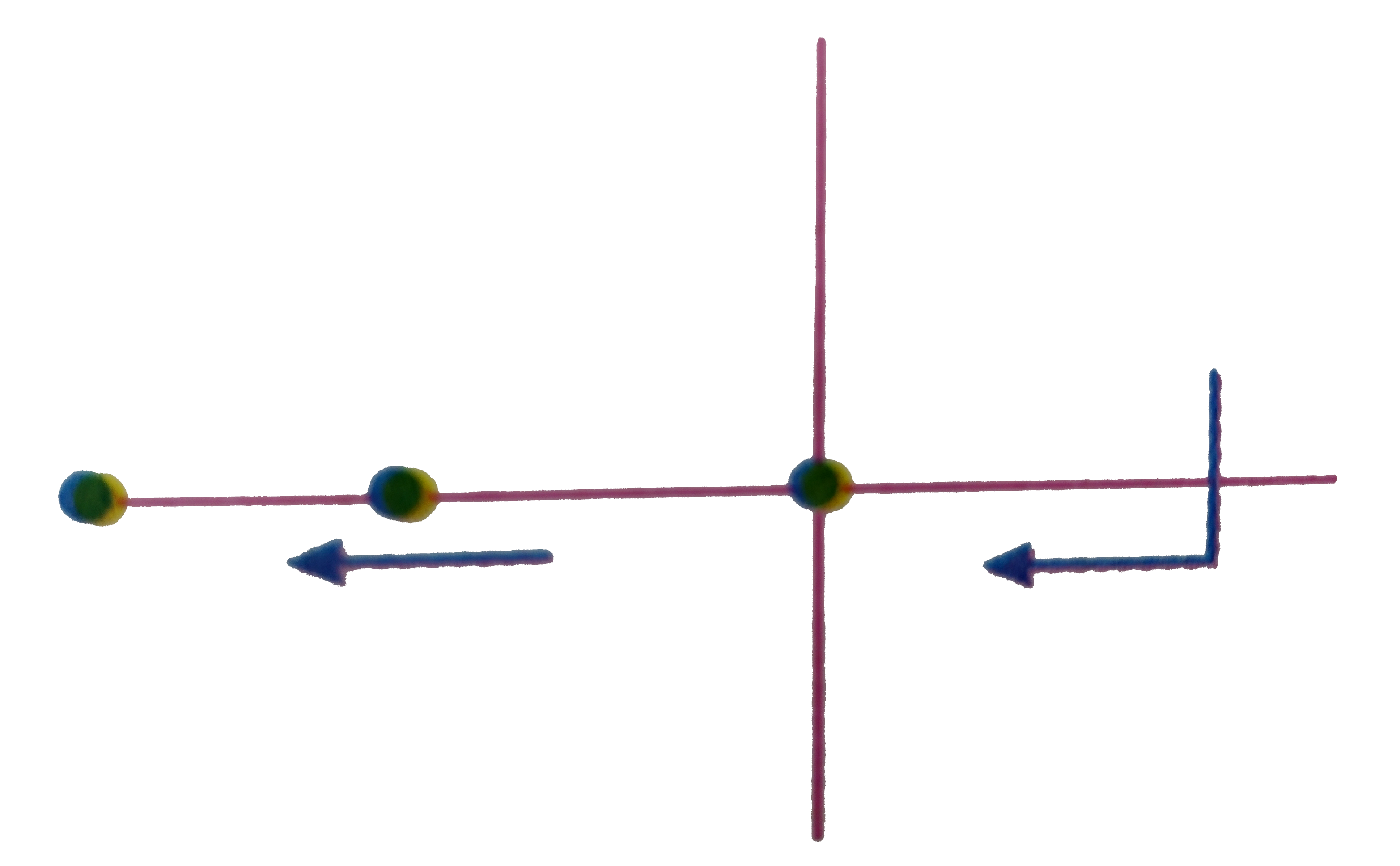Two very small particles are executing SHM along very near parallel lines about the same mean position, same amplitude and the same frequency. At t=0 both the particle are moving with speed of 1m/sec but on the opposite side of the mean position and having same direction of velocity at a distance of 5cm from the mean position. At t=4sec they are at the same position moving with speed of 1m/sec but in opposite direction. Assuming that this is the minimum time form t=0 where they are meeting for the 1st time. If the maximum speed of either particle is xπ4√2cm/sec Find x
The correct Answer is:5
5cm=A√2⇒A=5√2cm
T=16sec⇒ω=(2π16)

Vmax=2π16×5√2
Vmax=10√2π16cm/sec
=10√28×2π=54√2π
Topper's Solved these Questions
- BOOK - NARAYNACHAPTER - OSCILLATIONSEXERCISE - LEVEL-I (H.W)1videos
OSCILLATIONS
- BOOK - NARAYNACHAPTER - OSCILLATIONSEXERCISE - DISPLACEMENT6videos
OSCILLATIONS
- BOOK - NARAYNACHAPTER - OSCILLATIONSEXERCISE - Passage-XIII1videos
OSCILLATIONS
- BOOK - NARAYNACHAPTER - NEWTONS LAWS OF MOTIONEXERCISE - PASSAGE TYPE QUESTION6videos
NEWTONS LAWS OF MOTION
- BOOK - NARAYNACHAPTER - PHYSICAL WORLDEXERCISE - C.U.Q10videos
PHYSICAL WORLD
Similar Questions
The particle is executing SHM on a line 4 cm long. If its velocity at mean position is 12 m/s , then determine its frequency.
View SolutionTwo particle undergoes SHM along parallel line with the same time period (T) and equal amplitude At a particular instant , one particle is at its extereme position while the other is at its mean position .They move in the same direction .They will cross each other after a further time
 View Solution
View Solution
Knowledge Check
- Question 1 - Select One
When a particle executing a linear S.H.M. moves from its extreme position to the mean position, its
AK.E. decreases and potential energy increasesBK.E. increases and potential energy decreasesCpotential energy becomes zero but kinetic energy remains constantDP.E. increases but the K.E. becomes zero - Question 2 - Select One
The particle performing S.H.M. along a straight line about the mean position with an amplitude 'A'. Then the maximum potential energy at a distance A from the extreme position is
AAB0CA/2D(3/2)A - Question 3 - Select One
The amplitude and the periodic time of a S.H.M. are 5 cm and 6 sec respectively. At a distance of 2.5 cm away from the mean position, the phase will be
A5π/12Bπ/4Cπ/3Dπ/6
Two particles execute S.H.M. along the same line at the same frequency. They move in opposite direction at the mean position. The phase difference will be :
View SolutionTwo particles A and B oscillates in SHM having same amplitude and frequencies fA and fB respectively. At t=0 the particle A is at positive extreme position while the particle B is at a distance half of the amplitude on the positive side of the mean position and is moving away from the mean position.
View SolutionTwo particles undergo SHM along parallel lines with the same time period (T) and equal amplitudes. At particular instant, one particle is at its extreme position while the other is at its mean position. The move in the same direction. They will cross each other after a further time.
View SolutionThe particle is executing S.H.M. on a line 6 cms long. If its velocity at mean position is 12 cm/sec, its frequency in Hertz will be:
View SolutionA particle executes simple harmonic motion with an amplitude of 4cm At the mean position the velocity of tge particle is 10 earth distance of the particle from the mean position when its speed 5 point is
View Solution
